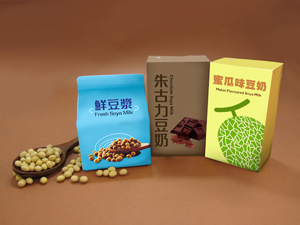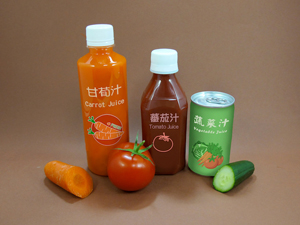|
|
| Step 1: Category |
| Food |
| Grains |
| Examples: biscuits, cakes, breakfast cereals, instant noodles |

| Vegetables |
| Examples: seaweed, green peas, vegetable chips |

| Fruits |
| Examples: dried fruit, canned fruit, fruit chips |

| Meat, Fish, Egg and Alternatives |
| Examples: fish sausage, beef and pork jerky, squid jerky, bean curd pudding |

| Nuts |
| Examples: almonds, peanuts, cashew nuts |

| Dairy Products |
|
Examples: yoghurt, cheese, excluding yoghurt drinks
|

| Other Food Items |
| Examples: candies, chocolate, chips and crisps |

|
|
| Drinks |
| Milk |
| Examples: milk, chocolate milk, banana milk, milk-based yoghurt drinks
in which milk composition is listed in the first or second place on the list of ingredients |

| Probiotic Drinks |
| Examples: yoghurt drinks with milk composition is not listed in the first or second place on the list of ingredients |

| Soy Drinks |
| Examples: plain soy drinks, fruit-flavoured soy drinks, chocolate soy drinks |

| Chinese Beverages/ Herbal Tea |
| Examples: chrysanthemum drinks, pear tea, ginseng drinks with honey |

| Fruit Juice |
| Examples: orange juice, apple juice, grape juice |

| Vegetable Juice |
| Examples: tomato juice, carrot juice, mixed vegetable juice |

| Other Drinks |
| Examples: sport drinks, soft drinks, rice milk, almond milk |

|
| Step 2: Nutrition Information |
|
|
| Analysis Result |
| Snack Nutrition Classification |
Snacks of Choice
Contains less fat, salt or sugar
- An individual pack provides of energy
|
Snacks to Choose in Moderation
Contains more fat, salt or sugar
- An individual pack provides of energy
|
Snacks to Choose Less
High in fat, salt or sugar
- An individual pack provides of energy
- Frequent consumption of snack high in fat, salt or sugar may have adverse effects on our health.
|
 |
| Nutrition Information |
|
Each 100 |
|
| Energy |
|
|
| Total fat |
|
|
| Sugar |
|
|
| Sodium |
|
|
| Dietary fibre |
|
|
Not applicable |
| Contains added oil |
|
| Contains added sugar |
|
|
| Manufacturer/ Distributor |
|
|
| Reference |
|
| 1. How to apply the data on the nutrition labels? |

Please refer to the ingredient list on the package to determine whether a food item contains added sugar or added oil.
Example:
PRODUCT NAME: PPP brand mixed nuts
INGREDIENTS: Mixed nuts, White Sugar, Vegetable Oil, Emulsifier, Flavourings
|
Sugar and oil may be listed in the ingredient list under different names. For details, please refer to the FAQs.
|
| 2. How do I know if a food item contains caffeine? |
Caffeine is naturally found in certain foods and drinks (such as coffee, milk tea, black tea and green tea), or added to food items during the food manufacturing process. In order to determine whether a food item contains caffeine, it is advisable to check the ingredient list of the food package.
Example:
PRODUCT NAME: ABC Fizzy Drink
INGREDIENTS: Carbonated Water, Colour(E150d), Acidity Regulators (E338, E331), Sweetener (E591, E950), Caffeine and other flavourings, Preservative (E211)
|
For more information, please visit the Centre for Food Safety website.
|
| 3. How do I know if a food item contains sweetener? |
If a food item contains additives, manufacturers are required to list them on the ingredient list.
Below are some common permitted sweeteners and their codes under the International Numbering System for Food Additives:
- Acesulfame Potassium (950)
- Alitame (956)
- Aspartame (951)
- Aspartame – Acesulfame Salt (962)
- Cyclamate (952)
- Saccharin (and Sodium, Potassium, Calcium Salts) (954)
- Sucralose (955)
- Thaumatin (957)
- Steviol glycosides (960)
- Neotame (961)
Example:
PRODUCT NAME: ABC Fizzy Drink
INGREDIENTS: Carbonated Water, Colour (E150d), Acidity Regulators (E338, E331), Sweeteners (E951, E950), Caffeine and other flavourings, Preservative (E211)
|
For more information, please visit the Centre for Food Safety website.
|
|
|


|
|

